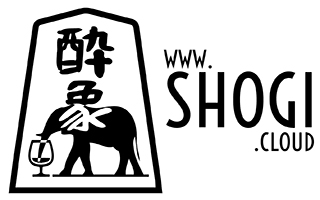set di gioco • shogi set
将
棋
セ
ッ
ト
english
Abstract
A guide to purchasing a shōgi set, the traditional Japanese board game. From budget-friendly solutions for beginners—such as foldable plastic sets with magnetic pieces—to handcrafted wooden sets with lacquered engravings and traditional boards. The text analyzes materials, character engraving techniques (stamped, carved, lacquered), styles, and price ranges. Includes links to reliable international and Japanese retailers, with warnings about shipping costs and customs duties. Ideal for those who want to start playing or improve the quality of their set, avoiding buying mistakes and choosing based on their level and needs.
Important note: the links on the page are not advertisements; they are provided solely as examples of shōgi sets.
english
Game Set
Buying Guide
Shōgi (将棋) is played mainly in Japan, but it is also known and practiced in other parts of the world. For Japanese players, game materials are easily accessible. For players living outside Japan, obtaining shōgi sets can be more challenging.
Usually, beginners take their first steps on online platforms (see: shogi-play-online) or with software installed on computers and mobile devices.
After this digital approach, beginners who want to deepen their knowledge of shōgi look for physical sets. A standard set consists mainly of a shōgiban (将棋盤), 20+20 koma (駒), and various optional but useful accessories.
The price of shōgi sets varies greatly. It depends on the material (plastic or wood), the method of production (industrial or handcrafted), shipping costs, and customs duties.
A beginner’s first set is usually a plastic and inexpensive one. It’s easy to find online stores selling travel sets that include a foldable shōgiban and plastic koma with magnets. The pieces typically show two printed kanji (example: 王将), and for beginners, the promoted pieces have red characters (example: 杏). In some cases, sets show only one simplified kanji (example: 王). Prices range from €15–€20. They are affordable but functional. Sometimes, dragging a piece on the board may leave ink marks.
Le Due Torri (Italy):
www.scacco.it …
The beginner looking to improve their playing experience usually upgrades to an affordable wooden set. These sets use low-grade wood, and the kanji on the pieces are printed. Some beginner sets even have movement guides printed on the pieces to aid learning.
Amazon (International):
www.amazon.it …
Shogi.cz:
shogi.cz …
The next level for fully appreciating shōgi is purchasing a traditional set. A key element is the traditional shōgiban, a floor-style board used while kneeling in seiza (正座) position. These sets are both furniture and playing surfaces and can be very expensive, reaching thousands of euros. They are often paired with two komadai (駒台), tall and costly piece holders. In addition to the high cost of these items, international shipping and customs duties can significantly raise the final price.
Excluding these beautiful but expensive sets, there are various progressively more refined tabletop shōgi sets available. Handcrafted sets are more expensive than industrial ones. The craftsmanship, type of wood, and wood grain patterns greatly influence the price. Whether the pieces are printed, hand-painted, or engraved with lacquer also affects the cost.
Aoyama Goban Store (Tokyo):
www5b.biglobe.ne.jp/~goban
Nekomado (Japan):
shop.nekomado.com
Nakajima Seikichi Shōten (Tendō):
www.shogi-koma.com
Tendō, in Yamagata Prefecture, is the main production center for shōgi sets and accessories in Japan.
For those looking to buy a set, I’ve outlined the types of wood, grain, and lettering styles to better understand the pricing. Final advice for international purchases from Japan: pay attention to exchange rates, local taxes, shipping fees, and import duties. If possible, ask the seller for a full breakdown before confirming the purchase to avoid justified but unexpected additional costs.
Materials for Shōgi Pieces
- Purasuchikku(プラスチック)
inexpensive plastic – very low value; - Kaba(樺)
simple, light-colored birch – low value; - Tsubaki(椿)
camellia, hard wood but not highly valued – low value; - Maki(槇)
soft podocarpus pine – low value; - Kaede(楓)
maple, slightly more refined – low value; - Ono-ore(斧折)
heavy, hard wood – medium-low value; - Shamu tsuge(シャム黄楊)
non-Japanese boxwood, fairly common – medium value; - Hontsuge(黄楊)
non-Japanese boxwood, variable quality – medium-high value; - Hontsuge from Satsuma(本黄楊)
durable and appreciated, from the Kagoshima region – high value; - Hontsuge from Mikurajima(本黄楊)
most highly prized for its luster and texture, very rare – very high value.
Types of Wood Grain in Shōgi Pieces
- Masame(柾目)
straight, vertical, and even grain – medium value; - Moku(杢)
complex and wavy grain, rare and highly prized, with many variations – high value.
Methods of Writing and Engraving Kanji on Koma
Oshibori-goma(押彫駒)
mechanically stamped with ink and pressure – very low value;
Kaki-goma(書き駒)
handwritten with brush and ink or lacquer – medium value;
Hori-goma(彫り駒)
engraved into the wood and refined with lacquer, without filling – medium-high value;
Horiume-goma(彫埋駒)
engraved and filled with ink or lacquer – high value;
Moriage-goma(盛り上げ駒)
engraved and filled in raised relief with lacquer – very high value.
Engraving Levels of Koma (彫りのレベル)
Oshi-goma(押駒)
pressed, with black characters and sometimes red ones for promoted pieces, no engraving – low level;
Insatsu-goma(印刷駒)
printed, with black characters and sometimes red for promoted pieces, no engraving – low level;
Kuro-bori(黒彫)
literally “black engraving,” refers to a very simple and dark engraving, often shallow; used for inexpensive or educational sets – basic level;
Nami-bori(並彫)
“standard engraving,” the typical level for everyday sets; the engraving is clear but still rather simple – medium-low level;
Chū-bori(中彫)
“medium engraving,” with more refined kanji shapes, deeper and sharper strokes – medium level;
Jō-bori(上彫)
“superior engraving,” done by skilled artisans, with elegant strokes and balanced proportions – high level;
Tokujō-bori(特上彫)
“top-grade engraving,” reserved for high-end or collector’s koma; maximum artistic precision, often signed by master craftsmen – very high level.
